‘Dark sky’ distinction for Shenzhen’s Xichong area set to spur China’s efforts to control light pollution
 (SONG CHEN / CHINA DAILY)
(SONG CHEN / CHINA DAILY)
Xu Guorong, 65, has lived all his life in an area of Shenzhen, Guangdong province, known for its long coastline, beautiful beaches and rolling mountains, which attract travelers from many countries.
A resident of the Xichong Community in the city’s Dapeng New Area, Xu likes to lie on the beach when night falls and look up at the stars while listening to waves crashing along the beach.
“It feels as though the entire Milky Way is right in front of your eyes,” he said.
Xu, who runs a seafood restaurant in the community, earning up to 300,000 yuan ($42,130) a year, said, “Local villagers such as myself live on the natural resources of the sea, and thanks to the development of tourism, we have been able to escape poverty and lead better lives.”
He became more optimistic about the future in April, when the community was certified by the International Dark-Sky Association, or IDA, as an International Dark Sky Community, or IDSC — the first of its kind in China and only the second in Asia after that in Bisei Town, an administrative district of Ibara, Japan.
According to the association, an IDSC refers to a town, city, municipality or other legally recognized community that has shown exceptional dedication to preserving the night sky by implementing and enforcing quality outdoor lighting, dark sky education and public support for such skies.
“For a long time, people came to my community for the sea. Now, they have more reasons to visit, including watching the stars. This international certification means the area will be known to a wider audience overseas, and this will attract more tourists and benefit the local economy,” Xu said.
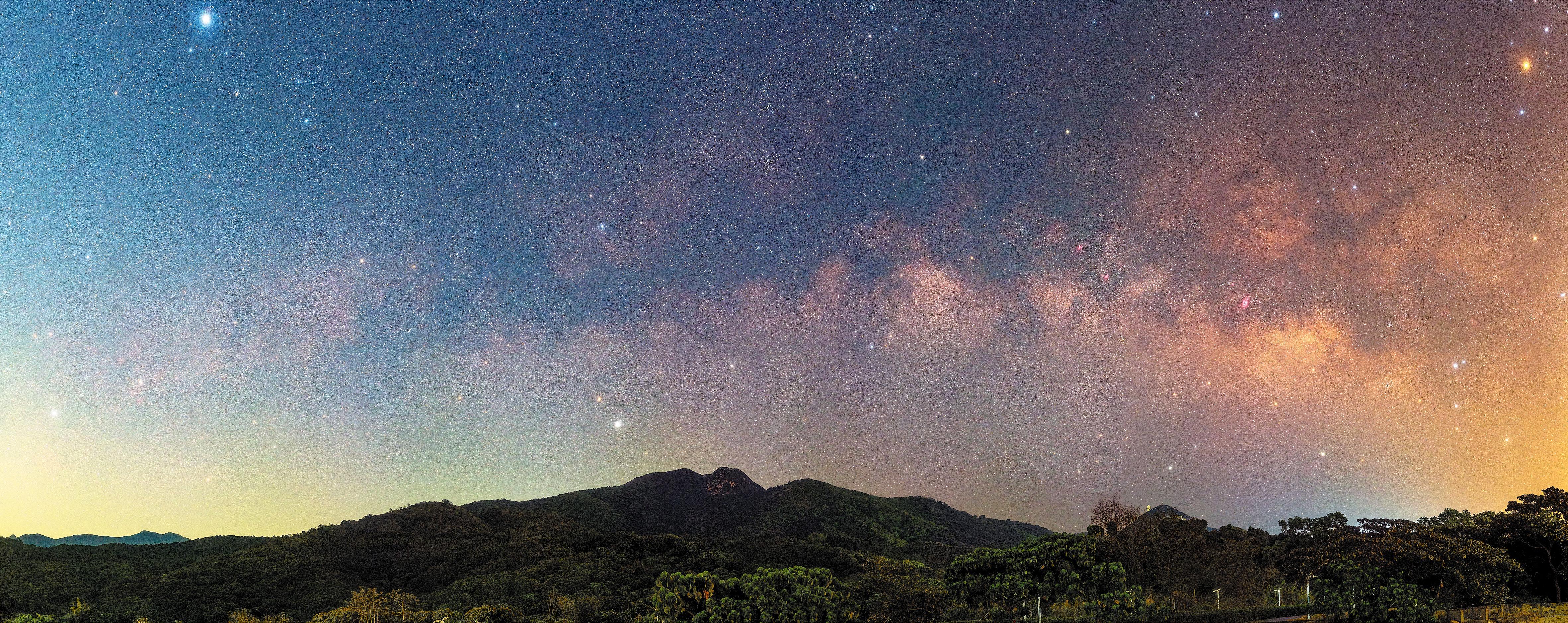 Stars glitter in the sky above Xichong Community in Dapeng New Area, Shenzhen, Guangdong province. Xichong has been certified as an International Dark Sky community. (ZHANG YIPENG / FOR CHINA DAILY)
Stars glitter in the sky above Xichong Community in Dapeng New Area, Shenzhen, Guangdong province. Xichong has been certified as an International Dark Sky community. (ZHANG YIPENG / FOR CHINA DAILY)
Covering an area of about 10.9 square kilometers, Xichong Community is about 60 km from downtown Shenzhen.
It boasts mountains on three sides, with the other side facing the sea. The area is home to eight natural villages, Xichong Beach — the city’s largest — and Shenzhen Astronomical Observatory. Some 1.6 million tourists visit the community each year.
Last year, Dapeng New Area welcomed 14.07 million tourists, representing year-on-year growth of 0.9 percent, official data show. Tourism revenue rose by about 7 percent from the previous year to 7.09 billion yuan.
Attending the certification ceremony in Xichong in April, Ruskin Hartley, CEO and executive director of the IDA, said, “Over the past two years, the Xichong pilot project has built a dark sky community model for other cities across China and around the world.”
He said the community differentiates itself from others, as it has a good mix of astronomical and ecological features.
“It (the certification) will be good for the community’s economy. It demonstrates that dark sky protection can go hand in hand with dark sky principles in green urban development as well as harmonious coexistence among humans, nature and the city,” Hartley said.
Xichong Community’s IDSC certification is evidence that the authorities in Shenzhen are stepping up the pursuit of green urban development by striking a delicate balance between economic growth and ecological preservation.
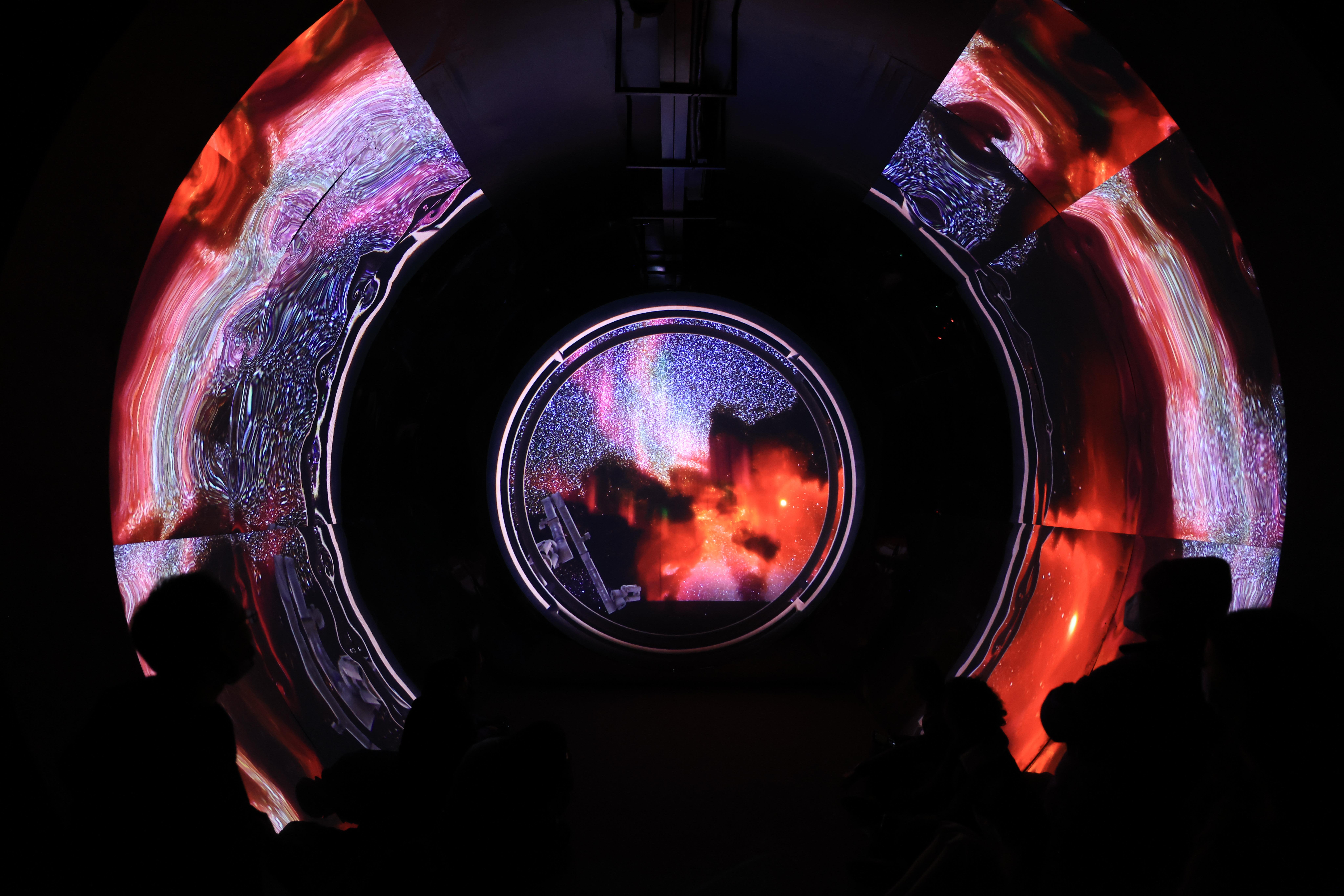 An artistic impression of the night sky seen through a telescope. (XU ZHENCHAO / FOR CHINA DAILY)
An artistic impression of the night sky seen through a telescope. (XU ZHENCHAO / FOR CHINA DAILY)
In August 2021, the city introduced an urban lighting plan that clarified the standards and requirements for building Shenzhen’s lighting system from 2021 to 2035. The document, released by the city’s urban management authority, said a dark sky protection demonstration zone will be built in Dapeng New Area.
Construction of a dark sky community in Xichong started in 2021.As part of the project, the local government renovated lighting and advertising boards in the community. The measures taken included changing to more eco-friendly lighting equipment, reducing luminance, and limiting the time that lighting is switched on.
Chen Shuwu, deputy head of the urban construction division at Dapeng New Area’s urban management bureau, said: “In the initial stages, people had little understanding of dark sky protection. Local residents and merchants in the community were concerned about the impact it could have on them.”
As a result, the bureau and other government departments launched a series of initiatives. They put up posters, distributed leaflets and conducted a questionnaire on the issue among more than 300 local residents and nearly 100 businesses. Financial subsidies were also granted to merchants who renovated their advertising board lighting.
“Through these efforts, local people and businesses have increased their knowledge of dark sky protection, and a wide consensus on the subject was reached,” Chen said.
Research suggests that artificial light at night could negatively affect human health, increasing the risk of obesity, depression, sleep disorders, diabetes, breast cancer and other ailments. Such light also has a devastating effect on plants and creatures, including amphibians, birds, mammals and insects.
Light pollution also wastes energy. The IDA said excess outdoor lighting produces global energy waste equivalent to the output of 2.6 million metric tons of coal and 13.6 million barrels of oil a year.
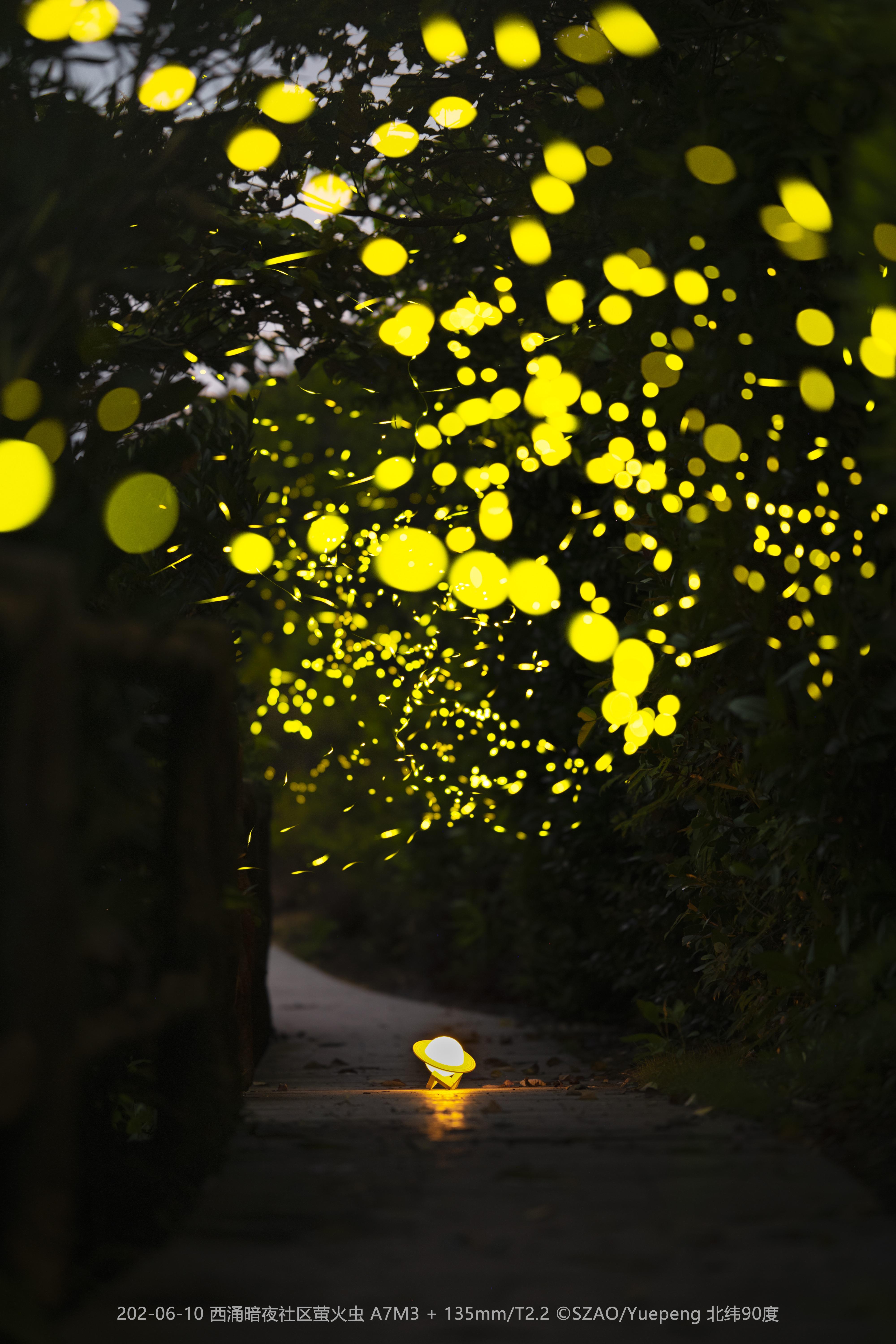 Fireflies light up the night in Xichong Community. (ZENG YUEPENG / FOR CHINA DAILY)
Fireflies light up the night in Xichong Community. (ZENG YUEPENG / FOR CHINA DAILY)
In the United States, 30 percent of outdoor lighting is wasted, costing up to $3.3 billion and 21 million tons of carbon dioxide emissions a year, the association said. Some 875 million trees need to be planted annually to offset these emissions.
Early this year, research published in the journal Science showed that from 2011 to 2022 the number of visible stars fell by a level that indicated a rise in sky brightness of 7 to 10 percent annually. The research was based on 51,351 naked-eye observations of stellar visibility, and the rate of increase was faster than that indicated by satellite observations.
An article published on the National Geographic website said more than 80 percent of the world’s population lives under sky glow — the brightness of the night sky in a built-up area as a result of light pollution.
Vast areas of North America, Europe, the Middle East and Asia experience light pollution, while only the most remote regions, such as Siberia, the Sahara and the Amazon, are in total darkness at night, the article stated. Singapore, Qatar and Kuwait are among the countries with the worst levels of light pollution in the world, it added.
Mei Lin, head of Shenzhen Astronomical Observatory’s astronomy department, said: “Public awareness of light pollution has increased in recent years. In the past, people thought that such pollution had little impact on their lives and health. Although they were uncomfortable with it, they thought it was inevitable and that there was nothing they could do about it. That is what I call ‘hidden awareness’.
“However, they are now fully aware of the detrimental impact of light pollution. They know that excess illumination is a ‘hidden killer’ that could harm their sleep and mental health, and they are taking steps to actively reduce it. A ‘clear awareness’ has already developed.”
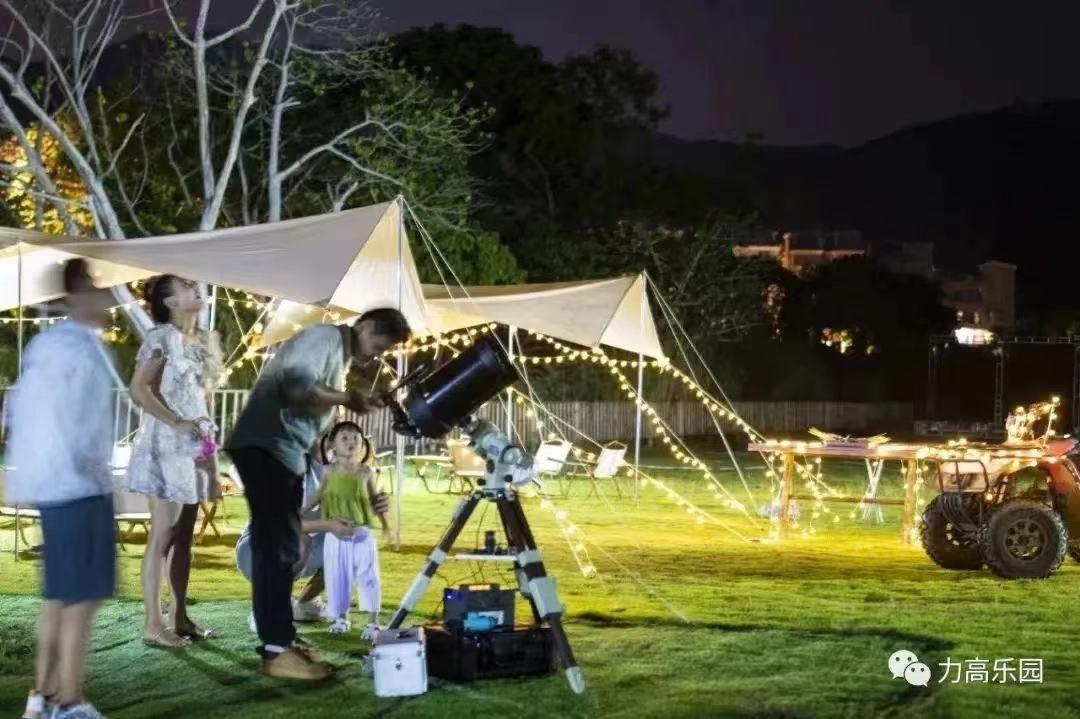 The night sky is observed in Xichong Community. (PHOTO PROVIDED TO CHINA DAILY)
The night sky is observed in Xichong Community. (PHOTO PROVIDED TO CHINA DAILY)
There are currently 40 certified IDSCs in the world, with more than half of them in the US.
In China, more local governments are working to combat light pollution.
The nation’s first local regulation to protect a dark sky reserve was approved in October by the authorities in Lenghu, Qinghai province. The regulation, which took effect at the start of this year, states that the type and intensity of lighting must be strictly controlled.
Many large cities, including Nanjing, Jiangsu province, Chengdu, Sichuan province, and Hangzhou, Zhejiang province, have begun to set up dark sky zones.
Mei said the ecology and environment department in Shenzhen is working on a three-year plan (2023-25) to prevent and control light pollution through some 40 guidelines. The city is also expected to introduce two local standards for lighting this year, he added.
“Formulating regulations and standards is essential for Xichong to achieve sustainable development. By doing so, we hope to build a system that could serve as an example for other cities,” Mei added.
Xichong Community’s dark sky protection efforts will not only benefit professional and amateur astronomers, but will also boost industries such as cultural tourism, hospitality and catering.
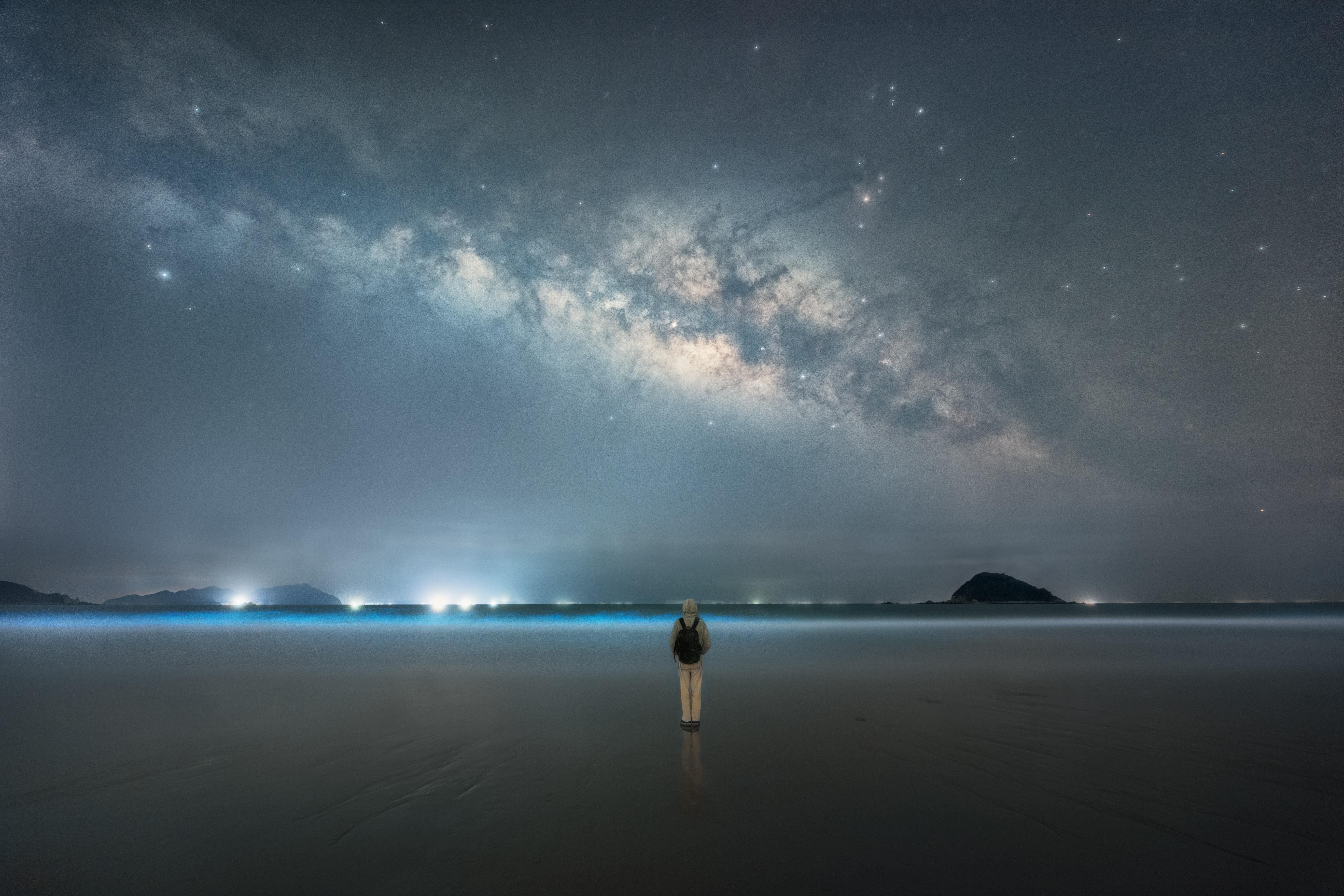 A night visitor to Xichong Beach appreciates the sky. (LIU JIYIN / FOR CHINA DAILY)
A night visitor to Xichong Beach appreciates the sky. (LIU JIYIN / FOR CHINA DAILY)
A number of campsites, homestays and food brands have emerged since the IDSC was established — playing an active role in fueling economic development and increasing local job opportunities.
Chen Jian started to set up a campsite in Xichong early last year for young people to learn about astronomy.
He said Xichong’s dark sky preservation efforts are significant, as they help not only with environmental protection, but also with education.
“Educating children about astronomy is highly important, as it can stimulate their interest and even become a future career choice,” he said.
During the seven-day National Day holiday in October, five astronomy events were organized at the Xichong campsite, each attracting 200 to 300 people.
“We were surprised, as we didn’t expect such a large number of people to attend. Interest among children in learning about astronomy is growing,” Chen Jian said.
However, one major challenge amid the increased public enthusiasm for such work is a lack of teachers.
“We are still in an early stage of development. Joint efforts from the government, industry and the public are needed to make progress,” Chen Jian said.
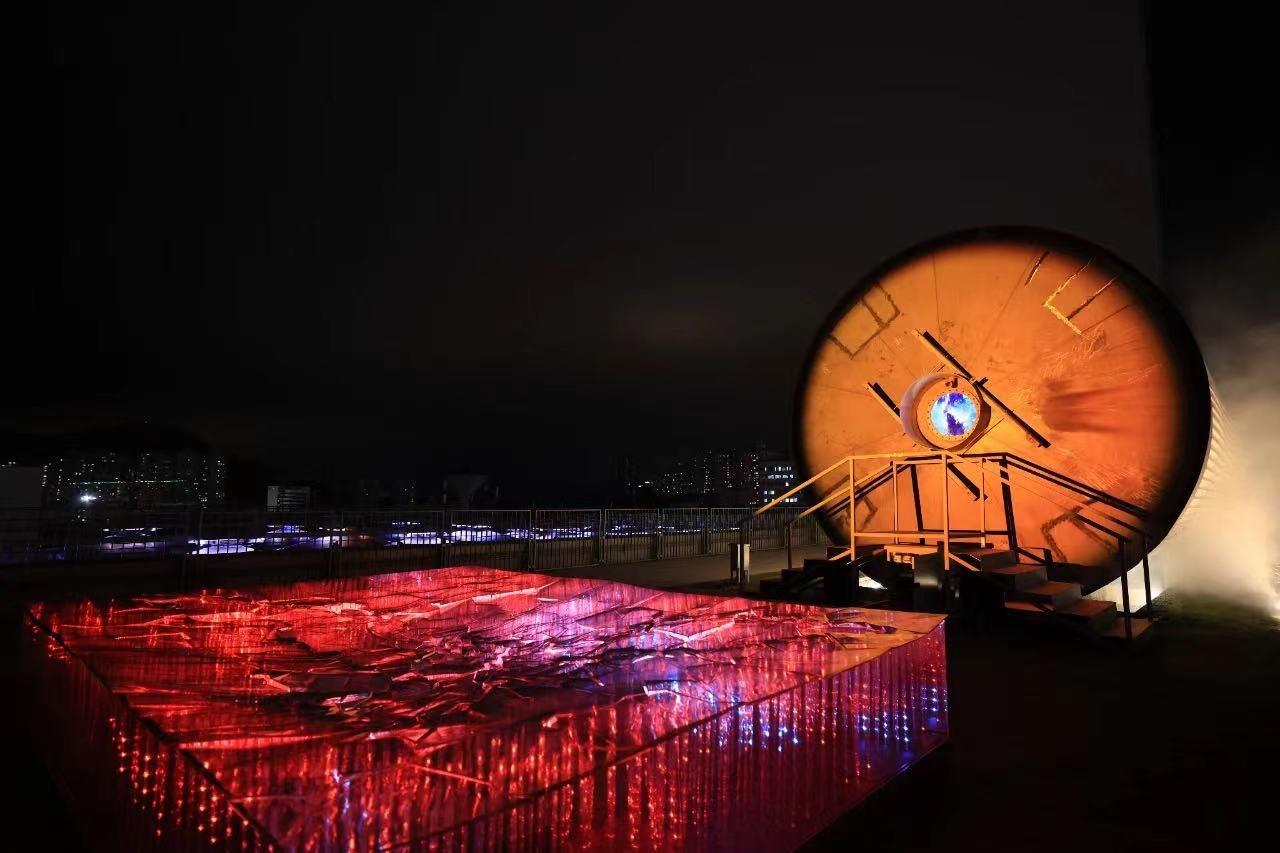 Equipment is set up in Xichong to assist night sky observations. (XU ZHENCHAO / FOR CHINA DAILY)
Equipment is set up in Xichong to assist night sky observations. (XU ZHENCHAO / FOR CHINA DAILY)
To prepare for an expected rise in the number of tourists interested in astronomy, Gao Qingfeng, who operates a homestay in Xichong, plans to renovate the balcony on top of the property into an area for watching the stars.
“The COVID-19 pandemic hit our business hard for the past three years,” he said, adding that the homestay’s operating revenue fell to about 200,000 yuan last year — compared with income of about 400,000 yuan before the pandemic emerged.
“But I have since regained hope. More tourists are expected to arrive for night sky observations, and I am very optimistic about the positive impact this can have,” he added.
Liang Zheng, director of the China Academy of Urban Planning and Design’s Research Center for Urban Lighting and Planning, which is responsible for planning lighting in Shenzhen, said dark sky preservation does not compromise economic growth. This is because such preservation does not prohibit any form of lighting, but focuses on increasing the quality of lighting.
The aim is to create a novel economic model by encouraging people to reduce unnecessary illumination without impacting their work and lives, Liang said.
Mei, from the Shenzhen Astronomical Observatory, added: “Dark sky protection is not in conflict with developing the night economy. If we make proper use of this invaluable resource, it will supplement the night economy well.”